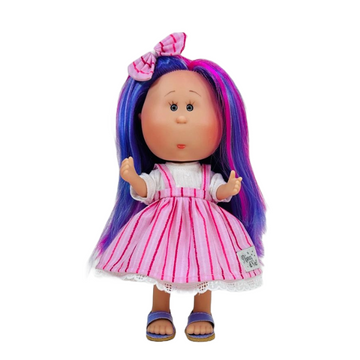Dolls And Accessories Fundamentals Explained
Dolls And Accessories Fundamentals Explained
Blog Article
Some Known Factual Statements About Dolls And Accessories
Table of ContentsSome Known Details About Dolls And Accessories 3 Simple Techniques For Dolls And AccessoriesGetting The Dolls And Accessories To WorkThe Buzz on Dolls And AccessoriesThe Main Principles Of Dolls And Accessories The Basic Principles Of Dolls And Accessories The Best Guide To Dolls And Accessories
When dolls are included in group play, youngsters practice waiting, sharing, and paying attention to others' concepts. Whether they're pretending to be a moms and dad, brother or sister, or friend, children discover just how partnerships workhow to sustain others, resolve disputes, and care for another person. These very early role-play experiences end up being the foundation for healthy and balanced relationships and connections later on in life.Duplicating reassuring regimens with a doll (feeding, rocking, closing) can assist children feel tranquil and safe and secure. These relaxing routines show them exactly how to self-regulate. Looking after a doll can make a kid really feel qualified and positive - european dolls. It provides a feeling of duty and control in a globe that commonly really feels unforeseeable.
Some Known Details About Dolls And Accessories
When kids see dolls that show their race, heritage, and society, it enhances a positive sense of identification. It says, "You belong. Your story matters." Dolls also present youngsters to societies outside their own, building respectful curiosity and empathy for others. This is where inclusive play can result in inclusive communities.
As Dr. Karyn Purvis, a leader in child growth and trauma-informed care, once claimed: This powerful quote highlights how play isn't simply funit's how youngsters learn ideal. The mind cords itself via repeating. However when a child is involved, happy, and mentally linked to an activitylike doll playthe brain strengthens those connections faster and a lot more meaningfully.
Dolls And Accessories Fundamentals Explained

Kids require compassion, generosity, and imagination tooand doll play provides that. Yesdolls supply something special. They urge open-ended storytelling and psychological connection in a manner few various other playthings do. Dolls are typically a kid's first "close friend," assisting them exercise partnerships, develop interaction skills, and feel comforted. Children develop their sense of self from a young age.
Dolls And Accessories Things To Know Before You Buy
Via play. With pride. Via dolls that matter. Many thanks for joining us on this trip. Samantha Ong Samantha Ong is the owner of Joeydolls, a Canadian-based plaything brand on an objective to commemorate click to investigate Eastern cultures via joyful, inclusive play. Motivated by her own experiences maturing without cultural depiction, Samantha designs dolls that aid youngsters really feel proud of that they are while stimulating curiosity and compassion in others.
Playing with dolls encourages children to chat even more regarding others' thoughts and feelings, a study has found. The study suggests that playing imaginary video games with dolls can help children create social skills, theory of mind and compassion.
The Buzz on Dolls And Accessories
They were likewise more probable to address the dolls in the 2nd person, speaking to them straight, whereas the personalities on the computer system display they had a tendency to describe in the third individual. No difference was observed in between kids and women."Inner state language can indicate that a youngster is considering other individuals's ideas and emotions while playing with dolls," said Gerson.
And that they see language usage in this regard is good confirmation of the theory."Mardell added that the searchings for ought to apply to any kind of kind of role-play toy, instead than being particular to Barbies."Kid typically start to show signs of inner state language around the age of 4.
3 Easy Facts About Dolls And Accessories Explained
"It becomes essential for making and sustaining relationships, and exactly how they pick up from their teachers, and moms and dads."The research study likewise discovered that the kids had increased brain task in the posterior remarkable temporal sulcus (pSTS) area when they talked as though their dolls had thoughts and sensations. The pSTS area is believed to be associated with the development of social and psychological processing abilities.
Childhood is not a static life stage; without a doubt, the definition, meaning and understanding of childhood are all subject to modification. By the nineteenth century among one of the most extensive adjustments was the importance put on allowing children to experience "the carefree joys" of youth through play activities. Play was now taken into consideration to be a vital element of a great youth.
In order to totally comprehend the definition of play, one have to likewise comprehend the importance of the doll. Dolls are a lot more than playthings developed to entertain young women.
The Facts About Dolls And Accessories Uncovered

It is just via archaeological examinations that scientists can hope to reveal and document the full variety of playtime experiences. Chronicling these experiences, and particularly the function of dolls, is crucial for presenting an extra full picture of youth during the nineteenth century. Alarcn, Sara E - doll clothes., "Child's Play: The Role of Dolls in 19th Century Childhood" (2007 )
Report this page